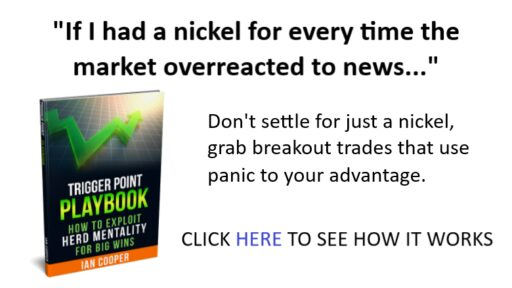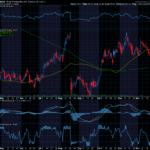by Darrell Jobman
Options can be used in many different ways to tailor your investment program; we will look at only a few possibilities. The concepts apply to options on stock indexes, index futures or individual stocks, but you should understand them thoroughly and have all of the risk/reward parameters outlined for you before you jump into any options position.
Keep the following factors in mind as you go through the examples:
- Prices mentioned are for illustration purposes only and may not reflect reality in the marketplace. After initial purchase, “stock price” indicates price at the time when the options expire.
- Be aware of liquidity: Some contracts may not have sufficient volume to get in or out of a position efficiently.
- Examples do not take into account important items such as interest you may earn on the cash in your account, dividends you earn from stocks you own, and commissions.
Bullish Call
Situation: Stock priced at $45, and your analysis suggests it could go up at least $5. You have $22,500 to invest and would like to buy 500 shares, but you are reluctant to put all your money into one stock. You can control 500 shares if you use options, however. Here’s how your investments would compare with various prices at the time the options expire in a few months.
| Buy 500 Shares at 45 | Buy Five 45 Calls at 4 Each | ||||||
| Stock Price | Value of Stocks | Change in Value | Return on Investment | Option Price | Value of Options | Change in Value | Return on Investment |
| 45 | $22,500 | Initial Purchase | 4 | $2,000 | Initial Purchase | ||
| 52 | $26,000 | +$3,500 | +15.6% | 7 | $3,500 | +$1,500 | +75% |
| 47 | $23,500 | +$1,000 | +4.4% | 2 | $1,000 | -$1,000 | -50% |
| 40 | $20,000 | -$2,500 | -11.1% | 0 | $2,000 | -$2,000 | -100% |
| 35 | $17,500 | -$5,000 | -22.2% | 0 | $2,000 | -$2,000 | -100% |
Whatever investment vehicle you use, it obviously is always nice to be right about the direction of the market when you make your initial decision. When you bought options at 4, it means you assumed the price at expiration would be at least $45 (your strike price) plus $4 (the premium you paid for the right to be long at $45). Once the price is above the 49 break-even point, your options make as many dollars as the stock purchase – and a significantly higher percentage return.

If the price at expiration is between 45 and 49, you lose some of your initial investment. If the price drops below 45, you lose all of your premium. But keep two things in mind: (1) The total premium ($2,000 here) is the most you can ever lose in this investment whereas you could lose much more in stocks if the price continues to decline further. (2) You still have $20,500 left that is not at risk and is earning interest, which would boost your return with options. You could use that to buy more shares at a lower price.
Covered Call
Situation: Same as above but you don’t think the stock will move up $5 in the near future. You are interested in the stock as a longer-term hold, and you would like to receive the dividends. However, you also are concerned the stock price could work lower in the interim.
| Sell Five 45 Calls at 4 Each | |
| Stock Price | Impact on Investment |
| 45 | Initial amount you receive from call sale = 5 * 4 * 100 = $2,000 |
| Below 45 | You still own the stocks and keep the entire premium, which reduces your break-even price for the stock to 41; you could sell another call and repeat the process. |
| Above 45 | The stocks are “called away” from you at 45 but you get $22,500 for the stocks plus any options premium remaining if the stock is below 49; at 47 for the stock, for example: 4 (what you received initially) – 2 (pay to buy back call) = 2 or $1,000 = 4.4% return |
This “covered call” strategy limits your upside potential but gives you down-side protection. If the price of the stock goes down, the premiums you received for the call lower your break-even point; if the price of the stock goes up, you have specified the profit you will receive but give up the right to gains beyond a certain point. In the meantime, you are collecting dividends while you own the stocks, which is not included in the return above.
Cash-Secured Put
Situation: Same as above except the stock price is wavering around 47 and you don’t want to pay more than 45. You put in a limit order to buy 500 shares at 45. At the same time you sell five 45 put options at 2.
This strategy helps you get your stocks at a price you set and lowers your break-even price. If the stock price makes a big decline, it won’t make you happy in either case, of course, but instead of your losses beginning at 45, they begin at 43 due to the premium you received from the put sale.
You can also use a variety of combinations selling both calls and puts to refine the amount you pay for the stock or to alter your break-even point.
| Stock Price at Expiration | Action in Stocks | Action in Options |
| Stays Above 45 | No purchase; limit order still open. | No stocks; keep premium. 2 * 5 * 100 = $1,000 |
| Below 45 | You own 500 shares at 45, which is the price at which you wanted to own them all along. | The stocks are “put” to you at 45. Subtract the premium you receive and your net price is 43. |
Protective Put
Situation: Same as above but now you own the stock at 45. You want to hold the stock long-term, collect the dividends and keep open the possibility of unlimited gains. However, you are a little nervous about the market and don’t want to see your stock price deteriorate to a level below what you paid for the shares. So you decide to buy some “insurance” – in stocks, that means buying put options to protect stocks you have purchased without limiting your profit potential.
Just as in the insurance world, the amount you pay for the put options to cover you in case of loss depends on the size of the “deductible” you want. Buying the 45 puts costs a little more, but it gives you the right (but not the obligation) to sell your stocks at 45, the price you originally paid. The put at 40 costs less because your coverage starts at a lower level and you have more money at risk. Your choice of put depends on the risk you want to bear.
As with other option strategies, there are a number of ways to use puts to ride the market up and protect profits while you maintain your hold on the stock.
| No Options | Buy Five 45 Puts at 3 | Buy Five 40 Puts at 1 | |
| Stock Cost | 45 (500 shares = $22,500) | 45 (500 shares = $22,500) | 45 (500 shares = $22,500) |
| Put Options Cost | 0 | 3 (3 * 5 * 100) = $1,500 | 1 (1 * 5 * 100 = $500) |
| Total Cost (Stocks + Insurance) | 45 ($22,500) | 48 ($24,000) | 46 ($23,000) |
| Amount at Risk | $22,500 | 3 ($1,500) | 6 (6 * 5 * 100 = $3,000) |











Recent Comments